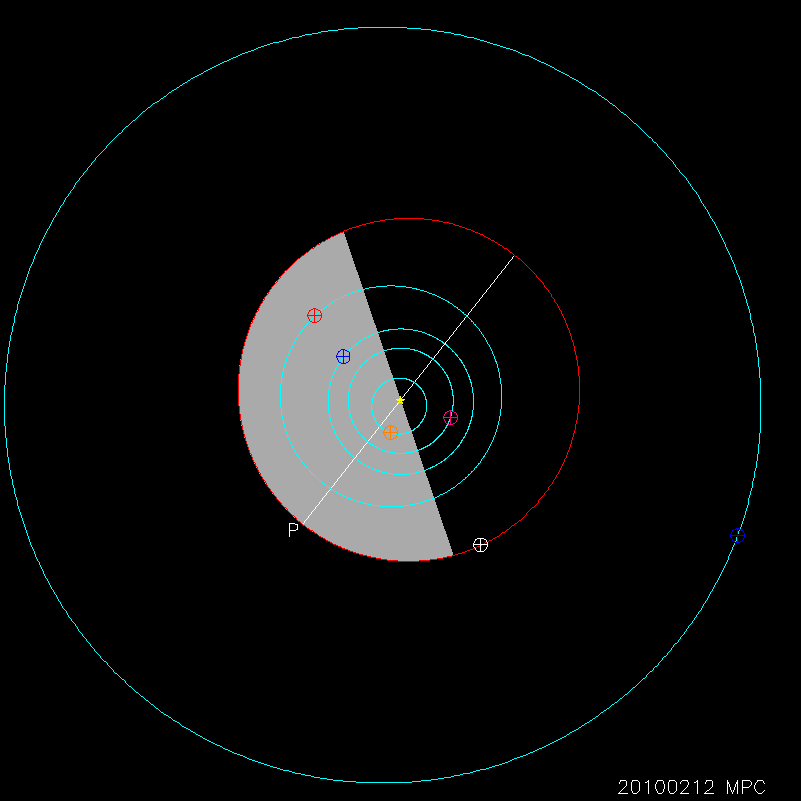(4147) Lennon
Minor planet number 4147 has been named in honor of former Beatle John Lennon.The citation announcing the naming appeared on Minor Planet Circular 16247 (issued on 1990 Apr. 10), from which the following is extracted with permission:
(4147) Lennon = 1983 AY
Discovered 1983 Jan. 12 by B. A. Skiff at the Anderson Mesa Station of
the Lowell Observatory.
Named in memory of John Lennon (1940--1980), musician and ex-Beatle.
With Paul McCartney, he wrote the early songs that helped make The Beatles
the most popular group of their generation. Perhaps the most famous Beatles
album is Sergeant Pepper's Lonely Hearts Club Band, which represents the
Lennon-McCartney partnership at its most fertile and innovative. From his
solo recording career, the song that will probably best be remembered is
`Imagine'. Violently anti-war, John, and his wife Yoko, also made many
public demonstrations of their desire for a peaceful world.
Read about how minor planets are named.
About (4147) Lennon
(4147) Lennon is in a 3.63-year elliptical orbit around the sun ranging in distance from 325.3 million km (at perihelion, closest point to the sun) to 381.4 million km (at aphelion, furthest point from the sun).The previous perihelion passage occurred on 2009 July 9.4 UT.
The orbit is inclined by 5.7 degrees to the ecliptic plane (the plane of the earth's orbit about the sun).
There is little information on the physical properties of (4147) Lennon. Even its diameter is uncertain--a range of 7 to 15 km is probable.
You will need a telescope to see this minor planet as its maximum brightness is some 1/4115 of the brightness of the faintest objects that can be seen with the unaided eye.
The diagram below show the orbit of (4147) Lennon in relation to the major planets in the inner solar system.

This view of the inner solar system is seen from the north ecliptic pole. The sun is the yellow star at the center of the image. The blue orbits represent, in increasing distance from the center, the major planets Mercury, Venus, Earth, Mars and Jupiter. The position of each major planet at the date indicated at the bottom of the plot is shown by the large circled cross. The orbit of the minor planet is shown in red, with the location of the minor planet (at the date indicated at the bottom of the plot) shown as a white circled cross. From this vantage point the planets revolve around the sun in a counter clockwise direction. The vernal equinox is off to the right. The portion of the minor planet's orbit that is below the plane of the earth's orbit is shaded grey. The perihelion point of the minor planet's orbit is at the end of the white straight line through the sun indicated by "P".
Also available is information on provisional designations.
Where is (4147) Lennon tonight? Customisable ephemerides are available.
Back to Rock & Roll Minor Planets
